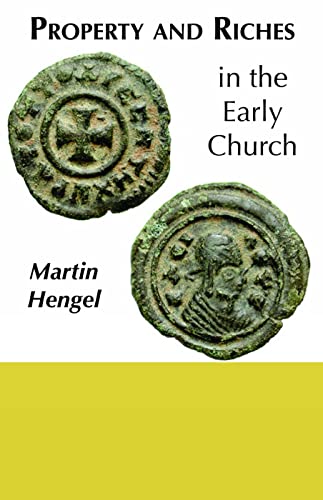Judaism and Hellenism—Studies in their Encounter in Palestine during the Early Hellenistic Period
Written by Martin Hengel Reviewed By Graham StantonThis massive study of the impact of Hellenistic culture on Judaism from about 360 to 150 bc has been welcomed with enthusiasm since it first appeared in German in 1969. Its appearance in English will be warmly applauded by all students of the New Testament and of the so-called intertestamental period. The translation by John Bowden is quite brilliant; SCM Press is to be congratulated on its initiative in undertaking such a major publishing venture in a time of widespread financial uncertainty. This book will undoubtedly become a standard reference book for many years to come.
The central argument can be stated quite simply. New Testament scholars have frequently differentiated sharply between ‘Palestinian’ and ‘Hellenistic’ Judaism; far-reaching conclusions have been built upon this axiom. But Jewish Palestine, Hengel insists, was no hermetically sealed island in the sea of Hellenistic oriental syncretism (I, p. 312). He argues that from about the middle of the third century bc all Judaism must really be designated ‘Hellenistic Judaism’ in the strict sense. Hengel’s thesis is not a new one. Several New Testament scholars have protested against a rigid division of first-century Judaism into ‘Palestinian’ and ‘Hellenistic’ wings. Now the case has been restated with vigour, clarity and amazing thoroughness. Details can and will be debated by specialists; some points have been over-stated, but there can no longer be any doubt that Hellenistic culture and the Greek language had entered into the very warp and woof of Jewish Palestine long before the New Testament period.
In his first section Hengel shows that during a lengthy period of peace in the third century bc, Hellenistic culture made a firm impact on Palestine, long before the fronts between Greece and Judaism had hardened. Hellenistic war techniques, administration, taxation, trade, commerce and social structure all made a deep impression. Here, as throughout the book, Hengel draws on his own study of the primary sources as well as on a vast amount of widely scattered secondary literature. New Testament specialists would be well advised to work through the text and footnotes carefully and note the way the author is able to draw on inscriptions, coins, Hellenistic and Jewish papyri, and archaeological data, as well as the better-known Greek and Jewish writings.
Hengel builds up a strong cumulative case for the use of Greek by Jews of higher social standing and for the infiltration of Greek education even into Jerusalem; we are reminded that in 175 bc the high priest Jason constructed a gymnasium in Jerusalem. Although the author’s study concentrates on the period before 150 bc,he is convinced that his conclusions are also valid for the later period. ‘In future we must not be influenced so much by the fact that one of the chief witnesses, the Rabbinic tradition, has been preserved only in Hebrew and Aramaic. S. Liebermann has inescapably shown that even here the Hellenistic element and use of the Greek language often gleams powerfully through’ (I, p. 106). Hengel suggests that some of the immediate circle of Jesus’ disciples may have been bilingual; the Gospel of Matthew may come from Greek-speaking Jewish-Christian circles in Palestine.
In his very lengthy third chapter the author discusses the influence of Hellenism on the later parts of the Old Testament, Ben Sira, the earlier apocalyptic writings and the earlier Qumran material. Hengel’s discussion of apocalyptic is particularly stimulating; he argues that the picture of history in apocalyptic is above all a fruit of the Jewish struggle for spiritual and religious self-determination against the invasion of Jerusalem by the Hellenistic spirit.
The author reconsiders the attempt to impose complete Hellenization on Judaism after the accession of Antiochus IV in 175 bc. The crucial importance of the Maccabean period for the development of Judaism is firmly underlined. The failure of the Hellenistic ‘reform’ attempt led to ‘the extreme sensitivity of Palestinian Judaism towards even an apparent usurpation of power over the law and sanctuary which is demonstrated in the Essene attacks on Jonathan and the Pharisaic criticism of John Hyrcanus, and which was expressed in wild mass demonstrations under Alexander Jannaeus, Herod and Archelaus and the Roman procurators’ (I, p. 306). ‘Jesus of Nazareth, Stephen, Paul came to grief among their own people because the Jews were no longer in a position to bring about a creative, self-critical transformation of the piety of the law with its strongly national and political colouring’ (I, p. 309).
This brief summary indicates the breadth of Hengel’s interests and some of the reasons why this book is important for students of the New Testament, even though it stops at about 150 bc. Hengel organizes a great mass of material very effectively and provides convenient summaries at the end of each chapter. Volume II consists entirely of footnotes, bibliography and indexes; this wealth of detail is no mere parade of scholarship, but helps to make Hengel’s work a most important reference tool for all students of the New Testament who take its historical background seriously.
Graham Stanton
King’s College, London






